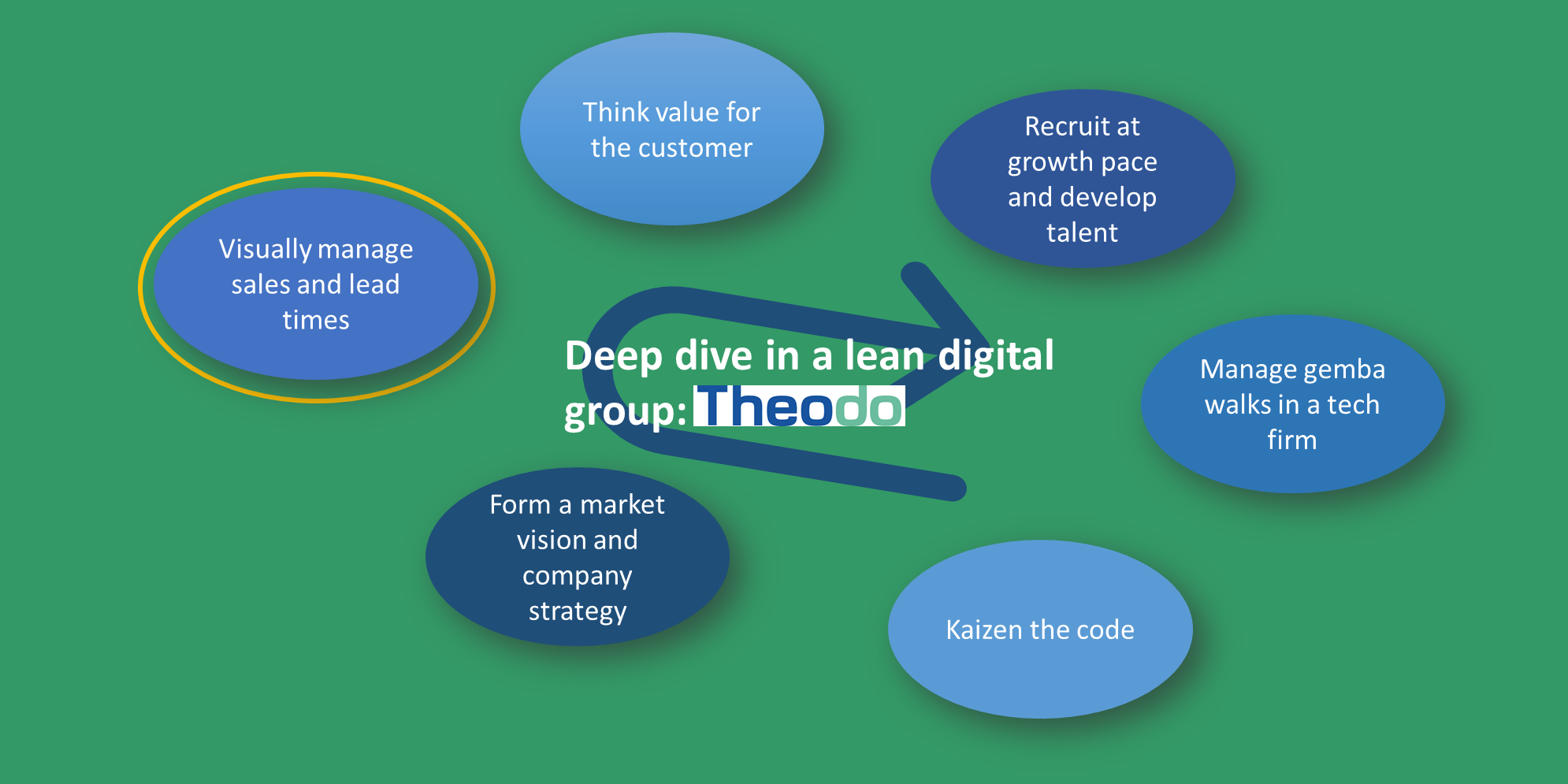
Four types of problems, in the management system
FEATURE – A lean management system is necessary to effectively run a business. Can Art Smalley’s four types of problems framework help such a system to focus on what’s really important?
Words: Gustavo Adolfo Gomez Pineda, Plant Manager, Schneider Electric Colombia and Senior Advisor, Lean Institute Colombia
I have studied and practiced Lean Thinking for the past 20 years, mostly learning by doing – on the job – and using our plant as a laboratory. It was our drive to always run experiments that led us, in September 2019, to try and implement the ideas contained in Art Smalley’s Four Types of Problems. The book had recently been translated into Spanish and, upon reading it, I was immediately impressed.
We set off to determine whether or not the lean management system that we had put in place in our plant could match Art’s categorization of problems. We began with a workshop we co-organized with Lean Institute Colombia. The (many) questions that came out of it were really our starting point to run this experiment.
The four types of problems Art Smalley describes in his book seemed very interesting to us, but we struggled to marry them with our management practices at first. There were clearly some common points, but overall we found it difficult to recognize the different types of problems in our context. Little did we know Art’s categorization would soon turn our management system on its head!
Not knowing exactly how to approach this experiment, we decided to look at the four types of problems in the context of the lean house, thus making the link to our lean practices (from standards and Kata to the Balanced Scorecard) more explicit. That way, we were able to create an interesting model that we integrated in our weekly management business review.
Before long, the walls of our Obeya (where the management review takes place) reflected the shift we were hoping to create with our experiment. By rearranging our boards on the walls to reflect the four types of problems, we changed the way we talked about issues at the plant.
THE STRUCTURE OF THE MEETING
Our weekly management meetings always start with the customer. We ensure they are satisfied and analyze any complaints we have received. Then, we begin to look at the different types of problems:
- First, we analyze the Type-1 problems – abnormal conditions that are rectified through quick troubleshooting – that have been “open” for more than five days. We look at one at a time, to really ensure we are not missing anything.
- We then follow up on any open Type-2 problems – real gaps from the standard that required more structured problem solving – and see if we need to escalate any Type-1 problems into Type-2. Type-2 problems are tackled with dedicated A3s. At this point in the meeting, we use the Balanced Scorecard (a tool we are very familiar with) to assess how we are doing against each of our targets. We have given ourselves a 30-day timeframe to solve Type-2 problems. If we can’t do it in a month, we immediately know we need to analyze them more in depth.
- For Type-3 problems (those referring to our target state, the strategic questions we need to answer to improve our performance), we look at our hoshin plan. We also try to “anticipate” any potential risks we might experience in the factory over the next three months, using the “proposal A3”.
- For us, Type-4 problems (those pertaining to innovation) are linked to our digital transformation, which is also integrated with our hoshin. In particular, we have three digital initiatives that we consider very important for us strategically.
In its current form, the meeting lasts around two hours. We found that a weekly two-hour meeting is more effective than a monthly eight-hour one: it allows to get into quite a bit of depth while making it easier for my managers to come prepared.

CHANGING HOW WE MANAGE
As much as we lean thinkers see problems as opportunities, we cannot expect this to be the case for every single person in our organizations. In fact, it is often difficult to talk about problems. And even when they are openly talked about, people find it hard to do so in a structured way. Initially, at Schneider Electric, we encountered some resistance in the team: they didn’t see the connection between the four types of problems and their work. Nonetheless, we persevered, knowing that we couldn’t look at the four types of problems in isolation: they had to be built into our approach, from VSM to hoshin. The change over to the four-types-of-problems system was hard, but people have now interiorized it. It’s a routine for them, part of their DNA. It’s provided us with a common language, much like A3 and VSM had in the past.
As I look around, I see a lot of companies that are not able to identify what problems should take priority, and that’s because they can’t distinguish between the different types of challenges they are faced with. For example, there is a clear tendency in the business world to treat Type-1 and Type-2 problems as Type-3 or Type-4 (for instance, implementing an App as a workaround rather than truly understanding and fixing the problem at the gemba). What’s worse, many companies only focus on Type-1 and Type-2 problems, forgetting about the critical Type-3 and Type-4. It happened to me as well, but I think it’s important to move away from that – something Art’s methodology forces you to do.
It’s been incredible to see how the four types of problems have transformed the way we manage our factory, perfectly complementing the lean management system we have built over the years. The biggest contribution of this new approach has been teaching us the importance to try and foresee problems (proactive) as opposed to simply responding to them once they occur (reactive). I have found great value in starting to look into Type-3 and Type-4 problems, even though I have to admit that Type-1 and Type-2 problems often take up all of the time we have available.
The beauty of this approach is that by consistently focusing on those Type-2 pain points, you are gradually building a smoother operation, which in turn will give more time to focus on more strategic issues. At Schneider Electric Colombia, we are seeing things we didn’t see before and we are attacking problems in a more effective way, whereas before we often mixed things up and didn’t deploy the right response to our issues. There is no doubt that we are now looking at our work in a more complete way, using a more logical structure for our work as managers. We are more confident in our ability to tackle whatever challenge we might face.
We have even seen a slight increase in productivity over the past nine months. Having reduced the number of Type-1 problems we experienced, people can now contribute more to the advancement of the plant. In fact, the majority of the problems we have now come from the outside – for instance, a supplier not sending parts due to the pandemic.
CAN THIS HELP COMPANIES POST-COVID?
Whatever your hoshin plans were for 2020, you likely had to go back to the drawing board. I believe that this is the perfect time to integrate the four types of problems into your activities, not least because in a crisis we tend to stick to Type-1 and Type-2 problems all the time. But the fact that the present is tumultuous shouldn’t make us forget about our future. Firefighting alone is not enough to get yourself out of the crisis.
Type-3 and Type-4 problems are about getting to better levels of service and reinventing yourself respectively. Both things are now more crucial than ever. Faced with Covid-19, many organizations have appeared paralyzed, uncapable of taking action (any action). But when things get tough is precisely when you have to try new things, run even more experiments than before.
The modern manager has to work with the four types of problems in mind.
A COMMENT FROM ART SMALLEY

I am pleased to hear the reflections of the company on their experiences with 4 Types of Problems. The vast majority of organizations struggle with improvement and the skill of problem solving is fundamental to all cases. Beginners usually prefer to see things one way and cling to that viewpoint early in their development. The more advanced you become in your field, the more you learn to view things from different angles or perspectives. Problems can sometimes be solved rapidly with actions, training, and cooperation. Sometimes more difficult problems require subject matter expertise and deeper technical levels of analysis. In some instances, there is no problem per se, but there are still waste and multiple angles for improvement. Occasionally, incredible insights occur and entirely new possibilities appear. Even expert scientists sometimes have to troubleshoot due to some type of time or resource constraint. Conversely, beginners can sometimes see possibilities that a veteran observer might miss. Problems are an opportunity to improve and develop our human potential. The context for problem solving is vital and never a static concept. In your respective line of work, please think about what type of problem you are facing and the best way to address it under the circumstances. For each problem there is a different mixture of time and resources constraints, difficulty level, impact or opportunity, capability, and risk associated. I am pleased when I see companies organizing their approaches accordingly.
For more insights, read Art's book Four Types of Problems.

THE AUTHOR

Read more


OPINION – The latest banking scandal had us all wonder whether Wells Fargo has lost its way. But how does a pioneering bank that once had lean at its heart betray its core values so profoundly?


NOTES FROM THE GEMBA – The author visits the office of Theodo France and learns how the lean digital company is leveraging lean thinking and practice to support its ongoing growth – even through the pandemic.


FEATURE – What are the main problems people encounter when running a project? The author ran a survey with 126 people over two years and presents the results of his research in this article.


FEATURE – Why is lean change so hard to achieve in times of plenty? And why does it seem to be more attainable when chaos reigns? The author tries to answer these questions.

